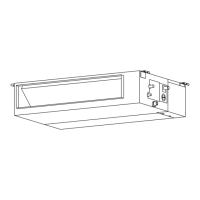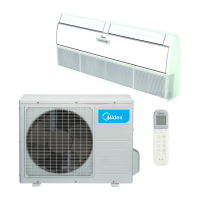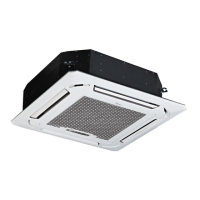Page 10
Care And
Maintenance
6. Rinse the lter with clean water and allow it
to air-dry.
DO NOT
let the lter dry in direct
sunlight.
7. Reinstall the lter.
8. Reinstall the front grille and reconnect the
display panel cable to the control box on the
main body.
Repairing Refrigerant Leaks
WARNING
• If the refrigerant leaks, turn o the air
conditioner and any combustible heating
devices, ventilate the room and call your
dealer immediately. Refrigerant is both toxic
and flammable.
DO NOT
use the air
conditioner until the leak is repaired.
• When the air conditioner is installed in a
small room, measures must be taken to
prevent the refrigerant concentration from
exceeding the safety limit in the event of
refrigerant leakage. Concentrated
refrigerant causes a severe health and safety
threat.
Refrigerant Leak Detection System
(some models)
• In the event of a refrigerant leak, the LCD
screen will display “EC” and the LED indicator
light will flash.
Preparation For Periods Of Non-Use
Maintenance after Extended Non-Use
1. Remove any obstacles blocking the vents of
both the indoor and outdoor units.
2. Clean the air lter and the front grille of the
indoor unit. Reinstall the clean, dry air lter in
its original position.
3. Turn on the main power switch at least 12
hours prior to operating the unit.
Storing the Unit While Not In Use
1. Run the appliance on FAN mode for 12 hours
in a warm room to dry it and prevent mold.
2. Turn o the appliance and unplug it.
3. Clean the air lter according to the instructions
in the previous section. Reinstall the clean, dry
lter before storing.
4. Remove the batteries from the remote control.
NOTE: Some models include an auto-lifting
panel function, which allows the grill to move
vertically and simplies the lter cleaning process.
4. Remove the air lter.
5. Clean the air lter by vacuuming the surface
or washing it in warm water with mild
detergent.
A. If using a vacuum cleaner, the inlet side
should face the vacuum.
Fig. 4.3
B. If using water, the inlet side should face
down and away from the water stream.
Fig. 4.4
Fig. 4.2

